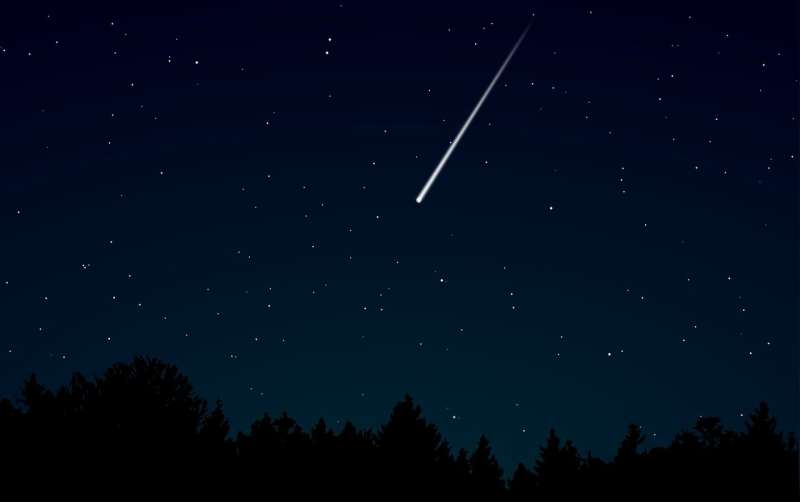Fossil of dinosaur killed in asteroid strike discovered in North Dakota, scientists say

A small dinosaur leg discovered in southwestern North Dakota may have been ripped from the animal's body on the same day a giant asteroid struck Earth and eventually wiped out the dinosaurs.
The team that found the specimen says the leg belonged to a plant-eating thescelosaurus. They also say the fossil, discovered with skin still attached, probably dates back 66 million years, when the extinction-level event occurred.
Also found were fish that breathed in impact debris once the planet was hit, a fossil turtle researchers say was pierced by a wooden stake, remains of small mammals and their burrows, skin from a horned triceratops, the embryo of a flying pterosaur inside its egg, and possibly a fragment from the asteroid.
The findings will be featured on the BBC One program "Dinosaurs: The Final Day with Sir David Attenborough" on Friday. It will also air in a two-hour PBS special starting at 9 p.m. on May 11.
According to Robert DePalma, the University of Manchester graduate student leading the dig, the project helped researchers fill in the play-by-play of the day the asteroid struck Earth.
"It's almost like watching it play out in the movies," he said to BBC News. "You look at the rock column, you look at the fossils there, and it brings you back to that day."
Paul Barrett of London's Natural History Museum isn't affiliated with the project but told BBC News there are no signs of disease or bite marks on the leg.
"So, the best idea that we have is that this is an animal that died more or less instantaneously," Barrett said.
Some experts are skeptical, however.
Anthony Fiorillo, a research professor at Southern Methodist University, is an expert in taphonomy, a branch of paleontology focusing on how things become fossils.
He called the leg "beautifully preserved," noting it's intact with fossilized soft tissue which is unusual on dinosaur fossils.
The team has an "interesting story," but details are lacking, Fiorillo said.
"A corpse deteriorates, so it could be equally as viable that this animal had died and this leg, the tissue holding it in place, had deteriorated to the point where some kind of sedimentological event pulled it off the animal and buried it 100 feet away from where the rest of the corpse was," Fiorillo said.
Liz Freedman Fowler, an assistant professor of biological and geological sciences at Dickinson State University in North Dakota, echoed Fiorillo's concerns.
"You can't really see much surface texture" on the fossil, she told USA TODAY on Tuesday. "There's one little patch that looks like skin, but the rest of it the photos aren't good enough to really say."
Regarding the recent discovery, Finding such an array of preserved fossils in the same place is unusual, Fowler said. She's waiting for more evidence, like maps and 3D scans of the site.
"We've heard maybe there were footprints. We want to see that leg in the ground and how it was lying relative to the fish fossils that were there. We've just seen individual pieces, but not the big picture of how they actually fit together."
(c)2022 USA Today
Distributed by Tribune Content Agency, LLC.




















